Dual 7-Segment Display - LED (RGB)
This is not your basic 7-segment display. The Dual 7-Segment Display features two digits with an RGB LED in every single segment! You will now have a small 7-segment LED in your project with a full-color display!
The Dual 7-Segment Display is breadboard friendly and possesses a digit height of 0.56in (14.22mm). The red LEDs have a forward voltage of 2VDC, 2.85VDC for green, and 2.95VDC for blue, with a continuous forward current per segment of 10mA for the red LEDs and 5mA for the green and blue.
Comments
Looking for answers to technical questions?
We welcome your comments and suggestions below. However, if you are looking for solutions to technical questions please see our Technical Assistance page.
Customer Reviews
No reviews yet.

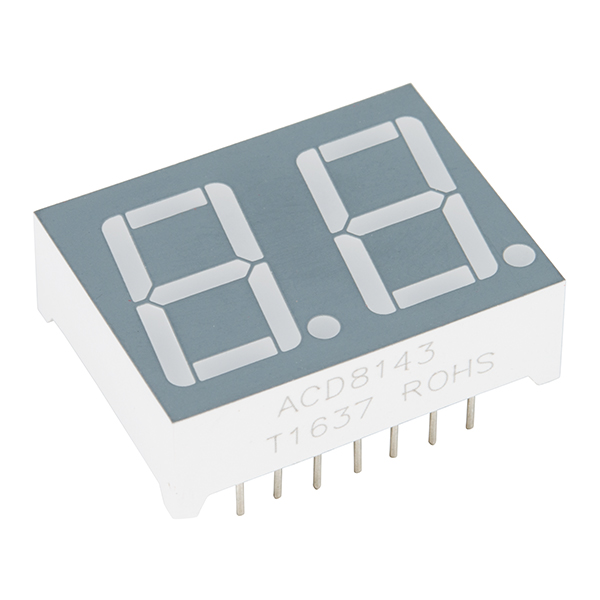
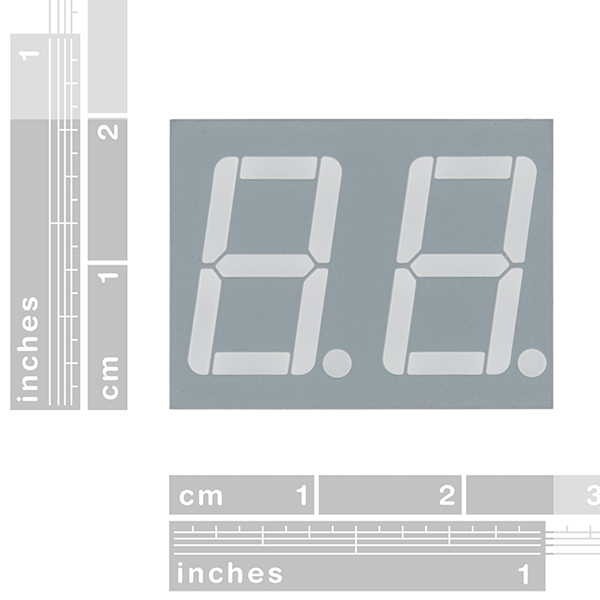
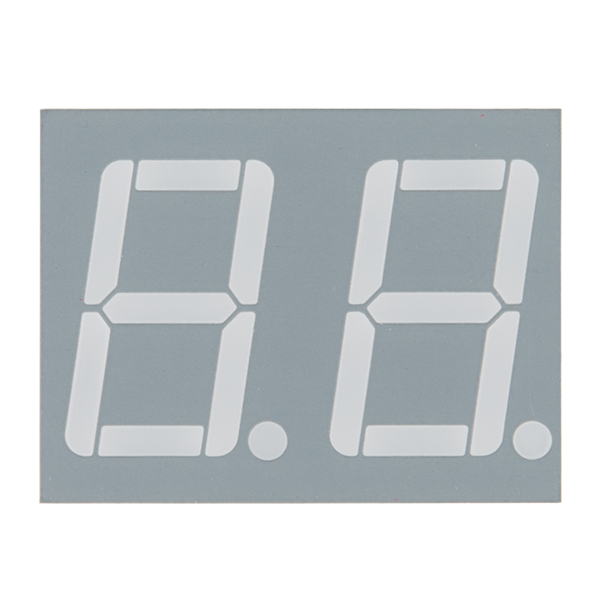
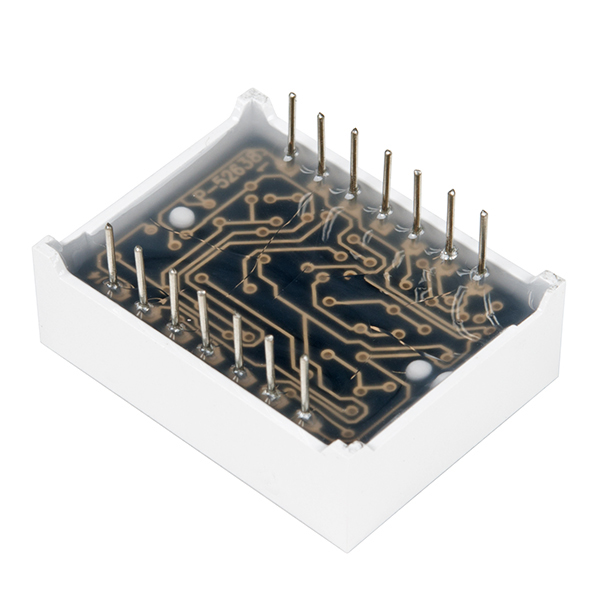
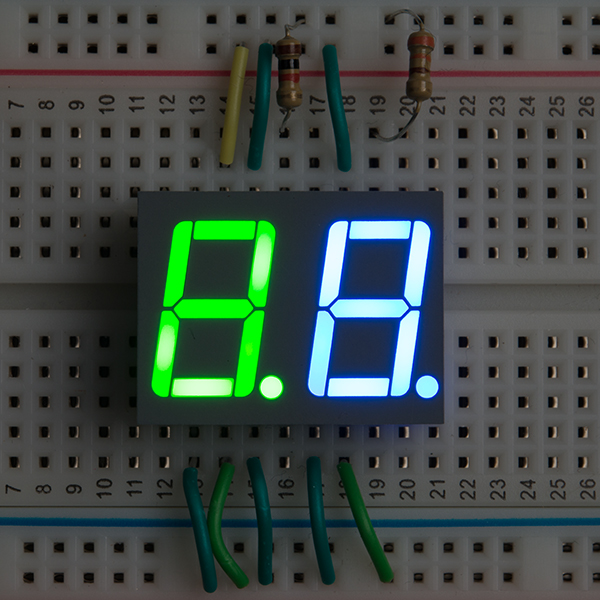
In answer to the impending question: Yes, we will be taking pictures of this 7-Seg with the individual RGB LEDs on. The reason why it isn't up yet is due to the fact that most of our staff is still on holiday break. Expect pictures to be up within the next week.
We apologize for any inconvenience this may cause!
I built a breadboard 16 digit calculator using these RGB displays. I multiplexed each color of every digit, so 48 steps total. And they are still plenty bright at 2% duty cycle.
WTF! I ordered this display and it does not allow me to separately control the 2 digits! For example, the only numbers i can do are 11, 22, 33, 44, 55, 66, 77, 88, and 99.
Am I missing something? From the data sheet (and also experimentally testing it) it seems like I can only control the colors. Both digits will behave identically because their diodes are connected in parallel which are shared per pin.
HELP
The trick is that this is a "multiplexed display" - if you look at the connection diagram, the diodes are not completely parallel. The cathodes are on rows and the anodes are on columns. I find it is easiest to think of it as a set of six common-cathode displays, three colors times two digits. Only one of the six can be on at any given time.
To display different things on different digits, you must alternate between them rapidly. Even though they are on at different times, if you cycle many times per second, the human eye sees a continuous image.
As RSP suggested downthread, the MAX7219 (sparkfun COM-09622) can be used to drive this display with a small number of external components, and it automates the switching-back-and-forth procedure I described above. Unfortunately, it will still be rather complicated to implement, as you must understand what the MAX7219 does in order to use it effectively.
Trying to figure out how to drive this thing to allow more than 1 of 3 colors.
You can't just use one current source per segment because then you would get different intensities as the current is split 1, 2 or 3 different ways by the three LED chips per segment. And since they are different forward voltages you'd end up with very poor sharing; the red LED would hog all the current.
You could use a high-side driver (with current limiting resistor) per segment then switch different potentials on the RGB lines (to try to match the forward drops of the LEDs) but that seems awkward.
You could mux them so that you are driving one segment at a time, but then you are down to a 1:8 duty cycle which seems like it would be dim.
Any thoughts?
One MAX7219 per display will make 7 colors and have overall intensity control (16 levels) at a 1:6 multiplex rate, and the chip will fit behind the LED on a PCB.
However IMHO it's too much trouble for too few colors. I'll wait for a version that incorporates full color addressable LEDs.